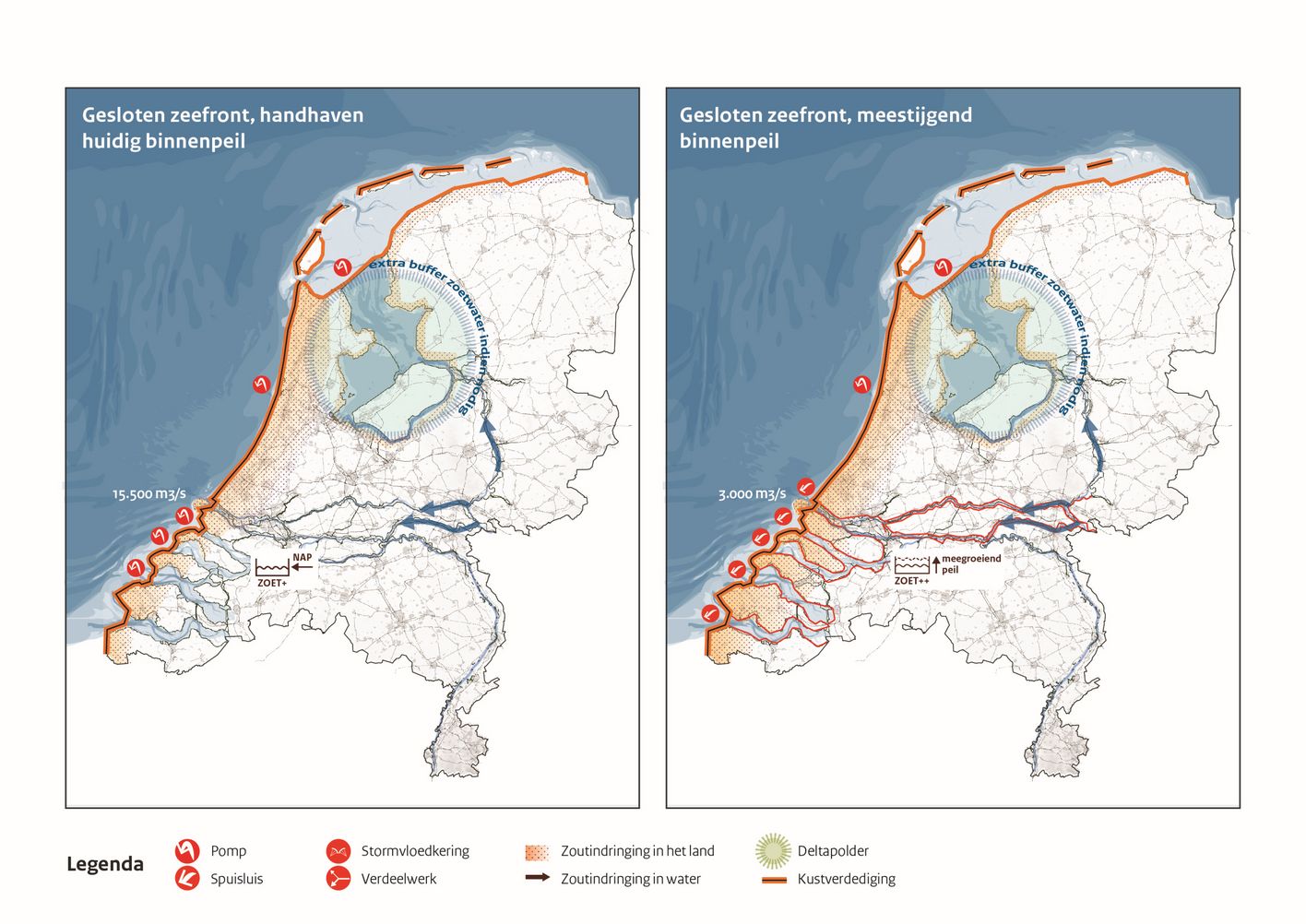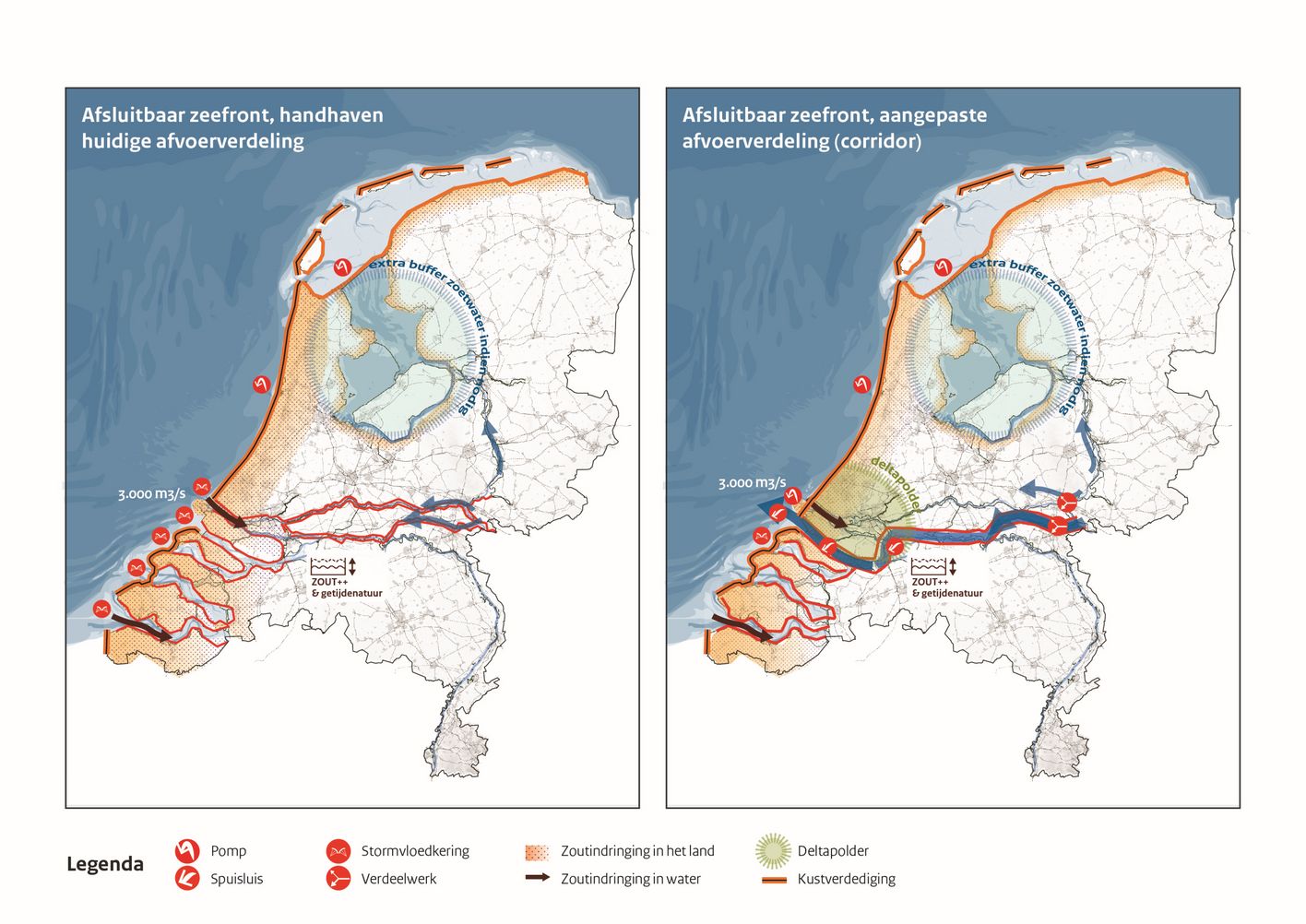Published on 04 March 2024
Sea level rise: how can the Netherlands change along with it?
Sea levels are rising, and climate change has been accelerating this rise in recent decades. It is still uncertain how this rise will continue, but what is certain is that it will continue. Over time, this could have major implications for the liveability and habitability of the Netherlands. Research published today maps all the major spatial options that may be necessary for the long term to deal with sea level rise. It is important to identify these opportunities now, because development, decision-making and implementation will cost a lot of money, space and time.
This study is part of the Sea Level Rise Knowledge Programme. The study was commissioned under assignment to the Ministry of Infrastructure and Water Management and the Delta Programme Commissioner, in collaboration with the Top Sector Water. Stephan van der Biezen (Director) and Bert van den Berg (Hydraulic Engineer) from Witteveen+Bos are involved in the study.
By as early as November 2023, it was already apparent that it would be technically possible to protect the Netherlands from a sea level rise of up to 3 metres with the existing approach of dyke reinforcements, storm surge barriers, beach nourishment and pumping. In one of KNMI’s climate scenarios, that rise is reached shortly after the year 2100. In the new study, conceptual directions were developed for 2 and 5 metres of sea level rise.
Three conceptual directions for the further future
Options for dealing with the rising sea have been studied and written up by three broad-based research groups, in which governments, research institutes and companies have joined forces.
- The first consortium dealt with the conceptual direction Protect, which builds on measures already partially known such as protection by flood defences and beach nourishment, closing off river inlets and removing excess water with pumps.
- The second group focused on the Seaward conceptual direction: using space at sea to solve future bottlenecks – such as accommodating peak discharges from rivers.
- The third conceptual direction was Adapt, in which land use and structures are adapted and water is given more space.
Stephan van der Biezen led the research group with the conceptual direction Protect. The approach consisted of open meetings with experts to share knowledge and work sessions with the research group. In these open meetings, strategies were developed to a level concrete enough to assess the spatial, technical and economic feasibility of the strategies.
‘I think we can be proud of what we have achieved as a research group in a short time. Important insights have been gained into the options we have for keeping the Netherlands liveable and safe in the long term,’ Stephan says. ‘The good news is that our backs are not against the wall: we still have time to make our own choices. We do, however, need to work together to prepare those choices.’
Considering future approaches now
Based on the three conceptual directions, a variety of options emerged to keep the Netherlands safe in the future. There are plenty of options for dealing with sea level rise, but this will require major spatial choices over time. Whatever choices are made, they will cost money, space and time.
The calculation and drawing work will be further developed in the coming years. The Knowledge Programme, for example, is looking at how spatial choices affect areas other than water safety, such as agriculture, water quality, shipping and nature. Follow-up research will also be carried out into the space that must be set aside now to keep the door open for future measures.
Stephan van der Biezen looks forward to the continuation of the Knowledge Programme: ‘What gives me a lot of confidence is the open collaboration that has developed between various parties within the water sector and the trust that has grown in each other’s roles. Such collaboration is indispensable to take the necessary steps forward and to make decisions.’
More information


